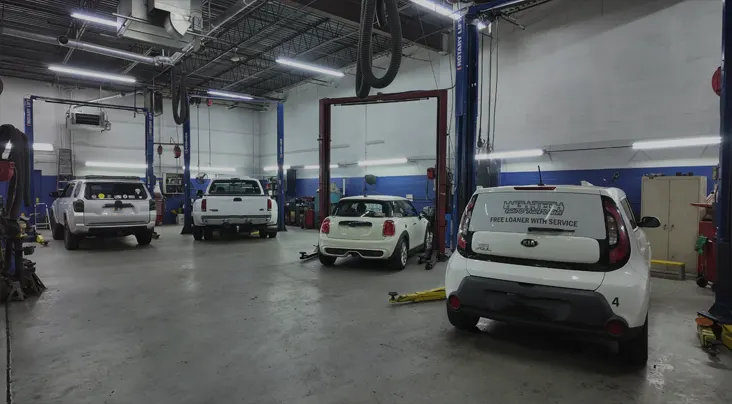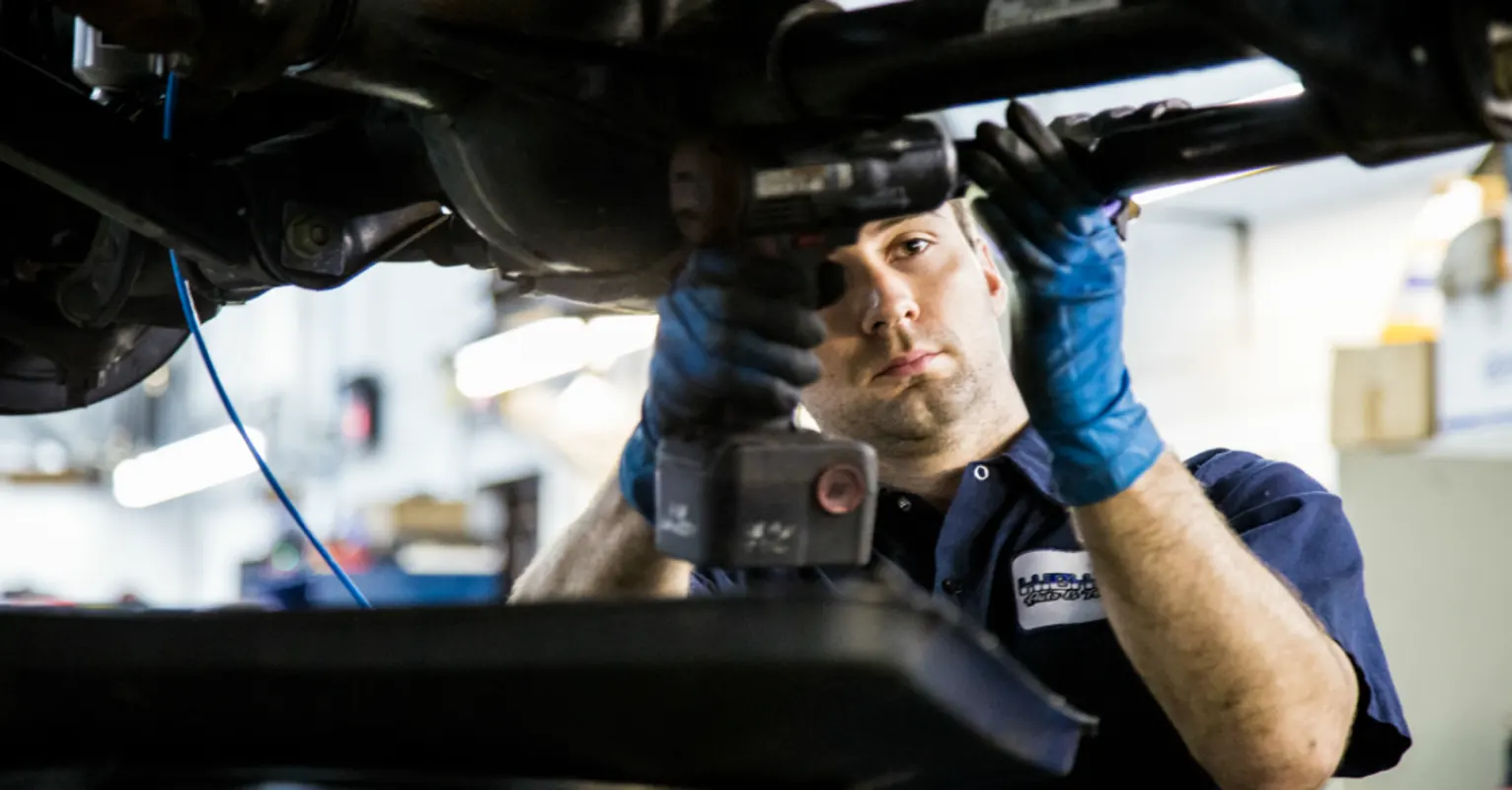
Archive for August 2025Motor Oil?The Synthetic Advantage (Synthetic oil vs Conventional)Posted August 31, 2025 4:42 AMYou’ve probably already heard that regular oil changes are extremely important for the health of your vehicle’s engine. That’s sound advice. But what you might not know is when it comes to motor oil, the real thing may not be the best thing for your engine. There are different types of motor oil:
The first thing you need to know is that most new engines require synthetic oil. If synthetic oil is recommended for your car – you MUST use it. For the rest, there are many advantages to using synthetic oil over conventional oil.
Synthetic oil can be a better choice if you live in an extremely hot or cold climate or put a lot of strain on your engine by towing or carrying heavy loads. It also may be good for older engines that sometimes have a tendency to develop sludge. Synthetic oil is a more expensive option, but you likely won’t have to have your oil changed as often. Some synthetics are recommended to last 10,000-15,000 miles/16,000-24,000 km between changes. You might also consider a synthetic blend that gives you some of the advantages of synthetic oil at a lower cost. Have a talk with your service adviser about recommendations for what will best suit your vehicle and driving habits. It’s interesting to note that in recent years, more than one out of two vehicle owners are opting for synthetic oil or a synthetic blend when they get their oil changed. Sounds like they’re on to something. In the long run, if you have fewer oil changes with synthetics, you’ll use less oil, a bonus for our environment. High-Tech Auto and Truck Center That Vexing Vapor Venting (Vapor Coming out of Vents)Posted August 24, 2025 4:32 AMYou may have noticed sometimes on a hot and humid day, vapor will come out of your vehicle's vents when you have the air conditioning on. Is that something to be concerned about? Well, it depends. Sometimes that steam or vapor can be caused by water accumulating in the vent system after it has condensed. And sometimes water can pool at the bottom of a vent. When you turn on the blower mower, the air hits the water and may create steam or vapor that you can see in the cabin. One thing to check is if that vapor smells like anything. If it doesn't, that's a good sign. You may be able to run the fan for a while and the issue may just go away when things dry out. But moisture collecting in the ventilation hoses in a hot vehicle may be a breeding ground for mold, and that can have health consequences. There's another possibility. Ventilation systems often have drains to get rid of any accumulated water, and debris can sometimes clog them. A technician can clean out those drains and you'll be back in business. One thing to nose around for is a sweet smell coming out of your vents. Sometimes the heater core (a component of your vehicle's heater system) can develop very tiny holes. That sweet smell may be coolant that's been vaporized by those tiny holes entering your cabin. It's always a good thing to mention to your service advisor any abnormality you're seeing—or smelling—in your vehicle. By venting a little about your vents, a technician can get to the bottom of the problem before it starts "clouding" the issue. High-Tech Auto and Truck Center How Much Does It Cost? (Variations in Vehicle Repair Costs)Posted August 17, 2025 4:53 AMEver wonder why it costs so much more to fix a similar problem in two different vehicles? Let's say you now own an SUV and before that, you owned a car. Your SUV's air conditioning system needs a new evaporator, but the cost for the new one is way more than you remember it was for your car. How can there be that big of a difference? There are many reasons. For one thing, vehicles aren't all the same. Yes, they have engines and steering wheels and suspensions, but engineering and design can vary widely among different styles and brands. In the case of replacing the evaporator, the one in your former car may have been located in a spot where the technician could get to it easily. Plus, the part may have been less complicated and, therefore, cheaper. Your SUV may require the entire dashboard to be removed with special tools to detach the a/c lines from the evaporator. Plus, since it is supplying cool air to a bigger cabin, it may be more complicated; the part itself may cost quite a bit more. But you're not an expert, so how do you know the price is fair? This is where it helps to establish a good, long-lasting relationship with a reputable service repair facility. They know you, they know your vehicle and they value keeping you as a customer. A facility that doesn't care about repeat business may try to suggest more repairs than are needed or inflate their prices. But those shops are unlikely to stay in business very long since their reputation gets around. If you've been taking your vehicles to the same shop for several years, you've had experience with them and know their policy on labor costs and parts prices. At some point you may wonder if it's worth it to keep putting money into your vehicle, and if you know your service advisor, you have developed a trust for his or her advice. Keep this in mind, too. Vehicle designers and engineers have made significant progress in things like powertrain technology and rust prevention. That means today's vehicles are meant to last longer. One study in a major consumer magazine shows that if you can keep your vehicle on the road for 200,000 miles/320,000 km, an average of 15 years, some vehicles can save you up to $30,000 or more. Investing in repairs can make a lot of sense. High-Tech Auto and Truck Center No Strain, No Gain (The Basics of Oil Filters)Posted August 10, 2025 4:47 AMEver wonder what one of the best things is to ever happen to your vehicle's engine? It's the little thing that usually looks like a can, the oil filter. Just like your kitchen sink strainer filters out errant particles of food from clogging your drain, the oil filter cleans out small particles that could cause your engine harm. Your engine operates in a dirty, hot environment and gathers a lot of tiny contaminants like dirt, dust, little metal shards and unlucky bugs that get sucked in. Get those things circulating in your engine and those little particles can cause friction, which starts wearing out those finely machined metal parts. You know how important it is to change your oil regularly. It's vital that you change your oil filter at the same time to keep the oil as close to brand new as possible. Most oil filters look like a metal can with some holes in the bottom. Inside there are carefully chosen materials that can screen out the contaminants while at the same time allow the lubricating oil to pass through. Early oil filters had steel wool, metal mesh or actual screens. Then they tried fabric filters using material such as linen and cotton. Finally, a less expensive disposable filter using paper and cellulose did the trick. Cellulose or other synthetic media are used in most oil filters today. Cellulose is inexpensive and effective. Fibers filter out particulates and let the oil flow. The other synthetic media have the ability to screen out even tinier particles while not significantly restricting the oil from getting through. Engineers continue to work on even more advanced filter material. Choosing the right oil filter is something our pros at High-Tech Auto and Truck Center can help you with because there are a lot of them out there. Factoring into that decision are your driving habits, how far you drive and the temperatures to which your engine will be subjected. While some filters will cost more than others, they may be worth it to extend the life of your engine. But most important is remembering to come have your oil changed at High-Tech Auto and Truck Center regularly at the intervals recommended by the vehicle's manufacturer. Just like you wouldn't want to have a plumber come over to fix a clogged kitchen drain, you certainly wouldn't want to have to pay for major engine repairs if they could be prevented by regular oil and filter changes.
Not Too Hot and Not Too Cold (Temperature Gauge)Posted August 3, 2025 4:39 AMYou know your body temperature is supposed to be 98.6 degrees F, 37 degrees C. Your vehicle has a normal temperature, too, and if you pay attention to it, that can save you some big headaches down the road. Many vehicles have a temperature gauge on the dash that takes the temperature of the engine's coolant. Some have a thermometer symbol, some read C-H (cold to hot). Many will have a red zone that shows when water temperature is getting into the danger zone. Others are digital and have a red warning light that signals overheating. And some vehicles have a light that goes on when the engine temperature is out of the normal range. If your vehicle has a gauge, pay attention to it. If you need help locating it, ask one of our High-Tech Auto and Truck Center experts to give you a quick explanation. Chances are when the vehicle has been running for 15 minutes or more, the temperature gauge will settle into its own "normal" zone, often just below the midway point. If you have a digital readout, remember what that "normal" temperature is. Here's why. At any point when you're driving, the temperature gauge is the quickest way to get a sense that the engine is running the way it should, a quick health checkup, as it were. Say you're on a 3-hour trip, glance at that gauge every hour or so. It should always be in the same spot. If it starts to move one way or the other, you may be able to catch a problem before it gets serious. Pay special attention to it moving into the hot zone. The needle on the gauge is the easiest and least distracting way to see an engine heating up, but on a digital gauge, start paying attention if the temperature reaches 240ºF/115ºC or more. Remember, though, that just because the gauge reads "hot" doesn't mean your engine is on the verge of burning up. It could be a bad sensor and the engine will be at a normal temperature. But it also could be a failing water pump, coolant leak or thermostat. By pulling off the road and observing your engine, it will give you a pretty good idea if it's running hot or not. If the gauge is too "cold," it could be a broken gauge or thermostat sticking open. Usually being in the cold range isn't as worrisome, but you should have it checked out since other systems may be affected. Heat is one of a vehicle's worst enemies, especially when it comes from within. Know your vehicle's normal temperature and keep an eye on it.
| ||
SearchArchiveDecember 2024 (16)January 2025 (4) February 2025 (4) March 2025 (5) April 2025 (4) May 2025 (4) June 2025 (5) July 2025 (4) August 2025 (5) September 2025 (4) October 2025 (4) November 2025 (5) December 2025 (3) | CategoriesBrake Service (3)Engine Air Filter (1)Fuel Filter (1)Service Intervals (2)Dashboard (1)Spark Plugs (1)Timing Belt (1)Alternator (1)Safety (1)Exhaust (4)Fuel Economy (3)Tires and Wheels (1)Older Vehicles (1)Battery (1)What Customers Should Know (19)Cabin Air Filter (1)Drive Train (1)Tires (3)Brakes (2)Alignment (1)Inspection (1)Air Conditioning (4)Trip Inspection (1)Fuel System (1)Keys to a long lasting vehicle (1)Customer Detective Work (1)Steering (2)Oil Change (1)Tire Rotation and Balancing (1)Check Engine Light (1)PCV Valve (1)Differential Service (1) | |
What Our Customers Say
Darwin was awesome he answered all my questions and took me out in shop he and the mechanic showed me the issues that I brought in for and pointed out other things that I had no idea about that needed to be addressed taylor was very helpful as well when Darwin wasn't available
Read more >~ Jon Devier, 12/12/2025


High-Tech Auto and Truck Center
4007 Westfax DrSuite D
Chantilly, VA 20151
Serving Areas
High-Tech Auto and Truck Center
4007 Westfax DrSuite D
Chantilly, VA 20151









